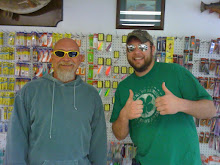This is the first time that the Lamoille River has been scheduled for treatment. A significant population of sea lamprey larvae was recently discovered there. The Lamoille River is the only Lake Champlain tributary to be treated this year, in a continuation of a long-term effort to protect the lake's fishery from the parasitic sea lamprey.
Sea lamprey control is a high priority component of the Lake Champlain fisheries restoration program jointly administered by the Vermont Fish & Wildlife Department, New York State Department of Environmental Conservation, and the U.S. Fish and Wildlife Service. Native lake trout, landlocked salmon, the endangered lake sturgeon, walleye and other fishes in Lake Champlain will benefit.
“Sea lampreys have caused devastating impacts on fishery restoration efforts in Lake Champlain,” said Vermont Fish and Wildlife Commissioner Wayne Laroche.
In the Lake Champlain system, most immature sea lamprey live in streams for four years before descending into Lake Champlain to prey on other fish. Under the sea lamprey control program, TFM (3-trifluoromethyl-4-nitrophenol) is applied in precise concentrations to the streams in a continuous, metered manner over a 12-hour period in order to kill the immature, larval form of the sea lamprey, while having little or no effects on populations of other aquatic species. Biologists also control sea lamprey reproduction in some smaller streams by trapping and removing adult sea lampreys during their spring spawning runs.
During and following the TFM treatment, temporary water use advisories will be in effect downstream from the Peterson Dam in Milton, and in surrounding lakeshore areas. The Vermont Department of Health recommends that the treated river and lake water not be used for domestic or recreational uses for the short advisory period. Agricultural water users in the affected area are also advised not to use river or lake water during the advisory period. Fish & Wildlife has set up a toll free number (1-800-640-3714) for the public to obtain information on the treatment and water use advisories.
Fish & Wildlife staff have identified all riparian landowners in the treatment area and informed them of the planned treatments. The department also provides affected residents with a supply of water upon request for household or agricultural needs if their use of surface water in the affected areas is restricted during the advisory period.
Local television and radio stations will broadcast the dates when advisories begin and expire. The treatment schedule is subject to change by weather conditions, stream flows or technical problems that may arise during the treatment. Residents in the advisory area will be kept informed of any such changes.
Studies show that sea lamprey control decreases wounding and scarring rates on fish, and it can increase populations of lake trout and landlocked salmon. Angler surveys showed that more and substantially bigger trout and salmon were caught during the experimental Lake Champlain lamprey control program in the 1990’s.
Lamprey wounding rates on Lake Champlain lake trout and landlocked salmon have declined substantially in the past two years due to recent lamprey control efforts. Wounding rates in 2008 were the lowest since 1998. Angler reports and fishing derby results this year show that more larger trout and salmon are being caught, indicating increased survival of the fish due to the reduction in parasitic sea lamprey numbers.
Fish on, fish H8 me.




.jpg)














No comments:
Post a Comment